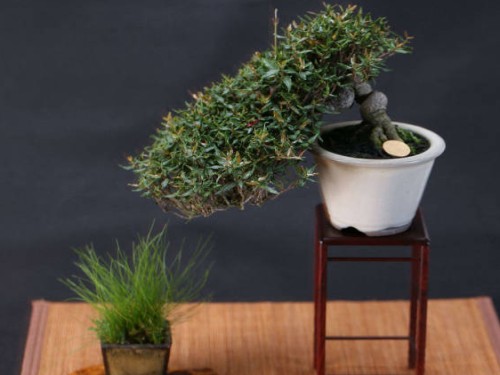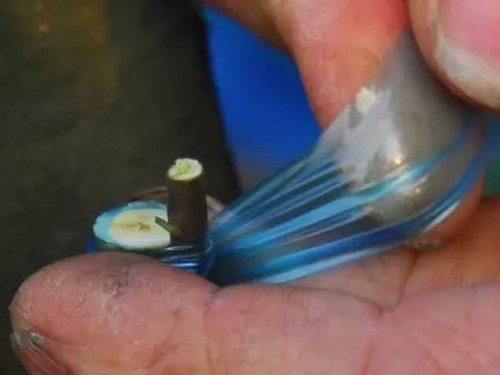How to fertilize bonsai flowers? What if I apply too much fertilizer?
Fertilization is mainly based on the requirements of ecological conditions and biological characteristics of flowers, pay attention to the relative balance of the three elements of fertilizer, as well as the composition of soil, the characteristics of fertilizer and other factors to determine the choice of fertilizer.
1. According to the characteristics of fertilizer, use fertilizer:
Fertilizer is divided into organic fertilizer and inorganic fertilizer. Organic fertilizer refers to human and animal feces and urine, animal hair, scales, bones, grain and oil seed residues and other organisms, diluted by fermentation. It contains comprehensive fertilizer and can meet the needs of all aspects of plant growth. It has the advantages of long fertilizer effect, less side effects and not easy to harden the soil. But there are also some shortcomings such as long fermentation time, unpleasant smell and so on.
Inorganic fertilizers commonly used are compound fertilizer, calcium superphosphate, calcium magnesium phosphorus, ammonium nitrate, potassium dihydrogen phosphate and so on. They contain fertilizer is relatively simple, with fast fertilizer effect, can acidify the soil, but partial or more application will make the soil too acidic, resulting in soil consolidation. Improper application can easily lead to fertilizer damage. The combined application of nitrogen fertilizer and phosphorus fertilizer can improve the fertilizer efficiency, ammonium chloride is not suitable for alkaline soil, and sodium nitrate and calcium nitrate should be used in acidic soil. Urea is a neutral fertilizer with high nitrogen content and is suitable for extra-root topdressing.
2. look at the fertilizer used in the types of flowers:
All kinds of flowers have different needs for nutrient elements. Foliage flowers can pay more attention to nitrogen fertilizer; large flowers need to apply appropriate amount of complete fertilizer during flowering in order to ensure blooming and beautiful shape; fruit flowers should properly control fertilizer and water during flowering period and apply sufficient complete fertilizer in fruit stage to achieve the desired effect. Bulb flowers, apply more potash fertilizer, in order to enrich the bulbs; fragrant flowers, enter the flowering stage, apply more phosphorus and potassium fertilizer to promote the strong smell of flowers.
3. Fertilization during the growing period:
Fertilizing after flowering: do not apply fertilizer when flowering, so as not to induce new buds prematurely and shorten the flowering period. After flowering, a large amount of organic matter has been consumed in the plant, which needs to be supplemented with compound fertilizer.
Application of fertilizer for promoting bud and flower: 10 days before plant flower bud differentiation. The phosphate fertilizer which can shorten the time of flower bud differentiation and promote flower bud differentiation is mainly selected, and 1-2% calcium superphosphate extract can be sprayed on branches and leaves.
Overwintering fertilizer: given half a month before the frost. In the north, it takes place between "White Dew" and "the Autumn Equinox". In the south, potash fertilizer which can improve the cold resistance of plants was mainly selected when applied before and after "the Beginning of Winter".
4. look at the growth and use fertilizer:
If the plant is short and thin, the branches are few, the leaves are yellowish, the flowers are small and not colorful, the seed setting rate is decreased, and the yield is low, then it is caused by the lack of nitrogen fertilizer.
If the plant grows slowly, the leaves are curly, the plant is short, the number of flowers is small, and the root system is underdeveloped, then it is caused by the lack of phosphate fertilizer.
The leaf edge and leaf tip turn yellow, then turn brown and fall off, the stem is soft and easy to bend, and the ability to resist drought and cold is very weak, which is caused by the lack of potash fertilizer.
In short, fertilization should pay attention to the relative balance of the three elements (nitrogen, phosphorus, potassium), the combined use of organic fertilizer and inorganic fertilizer, and timely, appropriate, low concentration and diligent fertilization.
[correct fertilization method]
Instead of trying to save it after suffering from fertilizer damage, it is better to learn the correct method of fertilization.
Fertilization should be "7% water, 3% fertilizer", especially when using compound fertilizer, the concentration should be 0.1%-0.3%, then spray it to the basin soil with a spray can, do not spray too much, and it is appropriate for the solution to flow out of the drain.
Solid fertilizer should be used appropriately according to the size of plants and flowerpots. For rod-shaped special compound fertilizer, generally, the diameter of flowerpot is about 1 / 2 in 10cm, the diameter of flowerpot is larger than 12cm, and 3 / 4 in diameter.
The concentration of topdressing should be low, such as the spraying concentration of urea is less than 0.1%, the concentration of calcium superphosphate is 0.1%-0.3%, the concentration of ferrous sulfate is 0.2%-0.5%, and the concentration of micro-fertilizer is 0.1%-0.2%. Bulbs, fleshy stem flowers, shade foliage flowers should be less fertile; succulent flowers should apply less fertilizer than shade foliage plants; fibrous root flowers, the amount of topdressing each time is 20%-25% of the normal amount; fruits and flowers should be fertilized more.
Due to lack of experience, many bonsai flowers will be overfertilized, resulting in fertilizer damage to the plants. When plants suffer from fertilizer damage, there are mainly the following phenomena: the branches and leaves of the aboveground parts wilt rapidly, the leaves are dim, and the underground roots change color and rot. So what should we do once the potted plants suffer from fertilizer damage?
[remedy]
1. Clean the root and change the basin
Immediately remove the damaged bonsai flowers from the pot, wash the roots and cut off the roots of the damaged parts, and cut off the wilting branches and leaves. Then change the culture soil, re-pot, pour water, and put it in a cool place, do not let direct sunlight, spray water to branches and leaves 3-5 times a day, to ensure that the plant water balance, until flowers and trees bonsai return to normal growth.
2. Pour water thoroughly
For some precious flowers and trees or delicate flowers and trees with delicate roots, it is not suitable to wash their roots and change the soil. The damaged flowers and trees should be watered for 2 or 3 times in a row in order to discharge high concentration fertilizer.
3. Flushing
Wash the flowerpot in flowing water for 1 hour or 2 hours, the water surface should be 2 cm higher than the basin surface, in order to quickly reduce the fertilizer content of the basin soil.
Time: 2019-06-10 Click:
- Prev

Time, method and principle of bonsai fertilization
Bonsai has less soil and limited nutrients, so it must be replenished constantly, otherwise the branches, weak leaves, yellow flowers and sparse fruits will affect the ornamental effect. At the same time, bonsai plants to inhibit their growth, generally do not need to fertilize too much, more application is easy to make the branches and leaves grow too dense, affecting the shape. Therefore, fertilization should be reasonable and appropriate.
- Next

Grafting technique of bonsai with golden marbles
For people who love nature and plants, they must put a lot of potted plants at home. The feeling of being surrounded by flowers and plants is very good. I feel that I am in a good mood when I am in the woods. This is also very beneficial to my health. For most potted plant lovers
Related
- Fuxing push coffee new agricultural production and marketing class: lack of small-scale processing plants
- Jujube rice field leisure farm deep ploughing Yilan for five years to create a space for organic food and play
- Nongyu Farm-A trial of organic papaya for brave women with advanced technology
- Four points for attention in the prevention and control of diseases and insect pests of edible fungi
- How to add nutrient solution to Edible Fungi
- Is there any good way to control edible fungus mites?
- Open Inoculation Technology of Edible Fungi
- Is there any clever way to use fertilizer for edible fungus in winter?
- What agents are used to kill the pathogens of edible fungi in the mushroom shed?
- Rapid drying of Edible Fungi

